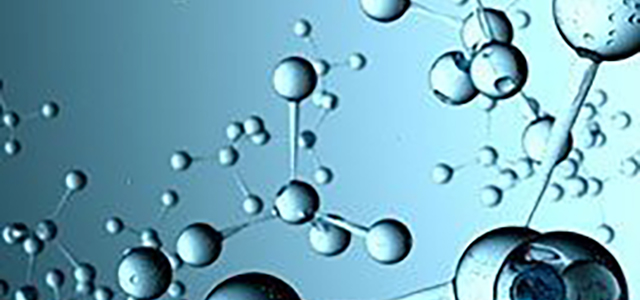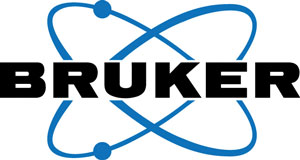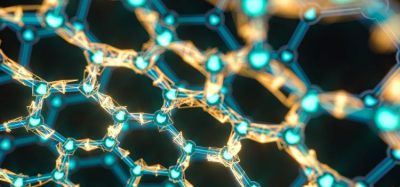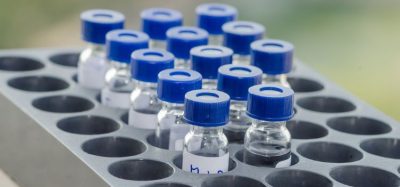Accelerating Pharma R&D using Mass Spectrometry and NMR


Accelerating Pharma R&D with Novel MS Applications for High Throughput Screening (HTS), Drug Imaging and Integrating MS and NMR data for high confidence structure verification of small molecules.
This webinar introduces novel MS and NMR solutions and its applications in pharmaceutical research.
What attendees learnt during this webinar:
- NMR Spectroscopy and Mass Spectrometry are two fundamental techniques for small molecule structure verification. Bruker FUSION-SV – a new software solution for comprehensive fully automated small molecule structure verification – simplifies and accelerates the drug design and discovery phases in the pharmaceutical industry significantly. The new Bruker FUSION-SV™ is a software solution integrating high resolution accurate mass (HRAM) data and complementary NMR data, into one result – increasing significantly the specificity and throughput for small organic molecule structure verification. Synthesis chemists will get a prompt result without being an expert spectroscopist.
- Matrix-assisted laser desorption/ionization time-of-flight mass spectrometry (MALDI-TOF MS) instruments are ideally suited for high throughput screening (HTS) in drug discovery. Not only speed, simplicity and robustness are the convincing arguments for MALDI-TOF MS but the inherent strength of a label- and solvent-free technique. The webinar will explain the technique and advantages of MALDI-TOF MS and present automation solutions for highest throughput and speed (less than 1 second per sample).
- Finally the webinar will describe how the MALDI technology is used for small molecule imaging when coupled to modern 7 T (Tesla) FT-MS instrumentation. Drugs and metabolites can be visualized and distinguished one from the other directly measured from tissue samples. These results can be linked with histological information derived from the very same tissue, giving new insights into drug action and toxicity.
Keynote speakers
Dr. Meike Hamester, Director Small Molecule Pharma Business, Bruker Daltonics


NMR Spectroscopy and Mass Spectrometry are two fundamental techniques for small molecule structure verification. Bruker’s experts have developed new proprietary algorithms to synergize NMR and MS measurements into one result. The new Bruker FUSION-SV software solution for rapid automatic structure verification allows scientists to easily integrate and combine high resolution accurate mass (HRAM) mass spectrometry and complementary NMR data. Unique auto-analysis algorithms based on complex human logic emulation interpret 1H or 1H/HSQC spectra to ensure structure verification with high confidence. Bruker’s well established and further enhanced SmartFormula™ algorithm is utilized for automated molecular weight determination by combining accurate mass data with True Isotopic Pattern (TIP) analysis. Client server architecture with embedded data base is utilized for efficient structure and data management and accessibility. Bruker FUSION-SV software solution is designed to simplify and automate small molecule structure verification for enhanced throughput in pharmaceutical research and development.
Dr. Matthias Trost, Program leader, MRC-PPU proteomics facility, University of Dundee


In biopharmaceutical laboratories, there is a growing need for high-throughput, yet sensitive methodologies to characterize deubiquitylase enzymes (DUBs) and DUB inhibitors. Current high-throughput screening (HTS) approaches make use of fluorogenic substrates or chemical probes, which do not represent real physiological substrates, thus leading to potential false-positives or false-negatives. We have developed a sensitive and fast assay to quantify in vitro DUB enzyme activity using matrix assisted laser desorption/ionization time-of-flight (MALDI TOF) mass spectrometry, called MALDI-TOF DUB assay. Unlike other current assays, this method uses unmodified substrates, such as diubiquitin topoisomers. By using of MALDI-TOF and a 15N-Ubiquitin internal standard, we are able to isotopically resolve the monoubiquitin formed by DUB at the intact protein level, and thus robustly quantify the production of this monoubiquitin. We demonstrate high linearity over almost three orders of magnitude with very high intraday/interday reproducibility (CV<10%). The MALDI TOF DUB assay now enables an extensive characterization of DUB activity and specificity as well as the assessment of the potency and specificity of DUB inhibitors in a high throughput manner.
Dr. Jens Fuchser, Application Development Teamleader Drug Imaging and Structure Analysis Solutions R/D, Bruker Daltonics


MALDI Imaging is a technique that features visualization of drugs and metabolites in tissue. Unlike autoradiography, it can differentiate drugs and metabolites. This, combined with the microscopic information, opens an entirely a new level of histopharmacology. FTMS instruments are especially suited for imaging of small molecules such as lipids because of their unsurpassed mass resolution and measurement accuracy. In the case of complex samples such as tissue, there are typically many isobaric compounds at each nominal m/z and a more accurate description of the sample makeup can be obtained when these are well resolved. Moreover, the precise mass measurement often allows an unambiguous determination of the molecular formulas of the observed compounds. Combining such high MS performance with a high spatial resolution promises to generate data sets rich with information.
Supported by Bruker
Bruker has been driven by the idea to always provide the best technological solution for each analytical task for more than 50 years. Today, more than 6,000 employees are working on this permanent challenge at over 90 locations worldwide. Bruker systems cover a broad spectrum of applications in all fields of research and development and are used in all industrial production processes for the purpose of ensuring quality and process reliability.
Find out more: www.bruker.com
Related topics
Mass Spectrometry, Nuclear Magnetic Resonance (NMR) spectrometry







